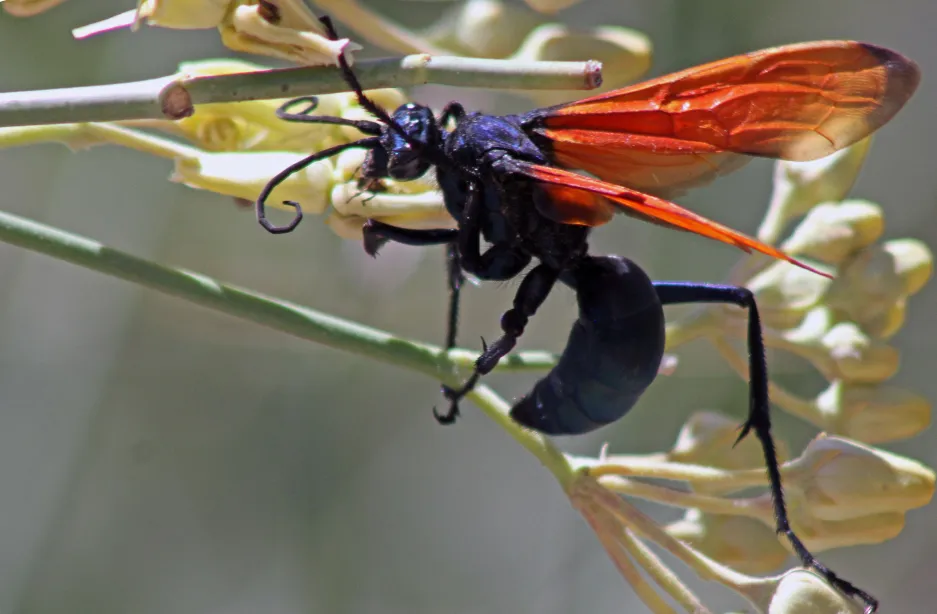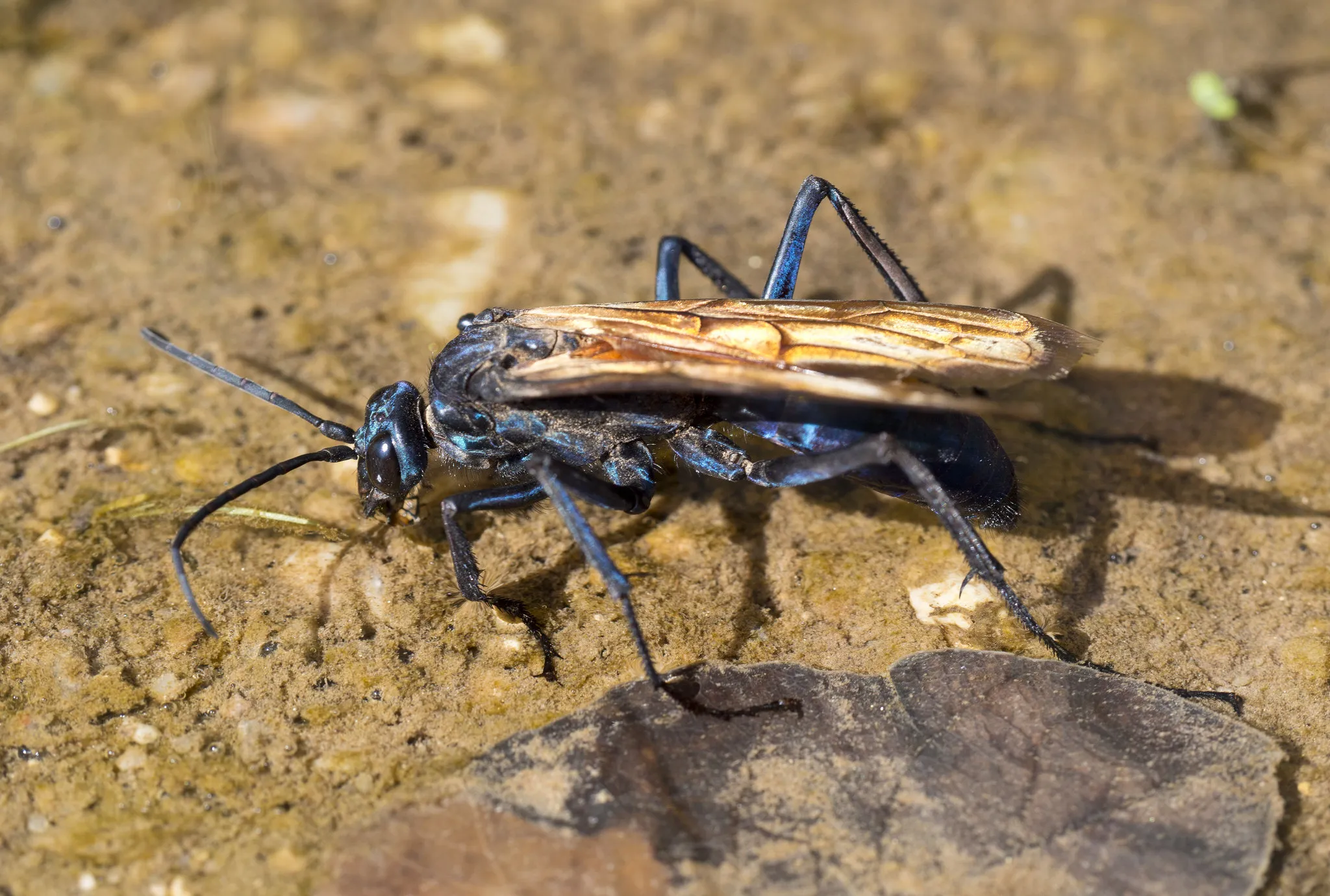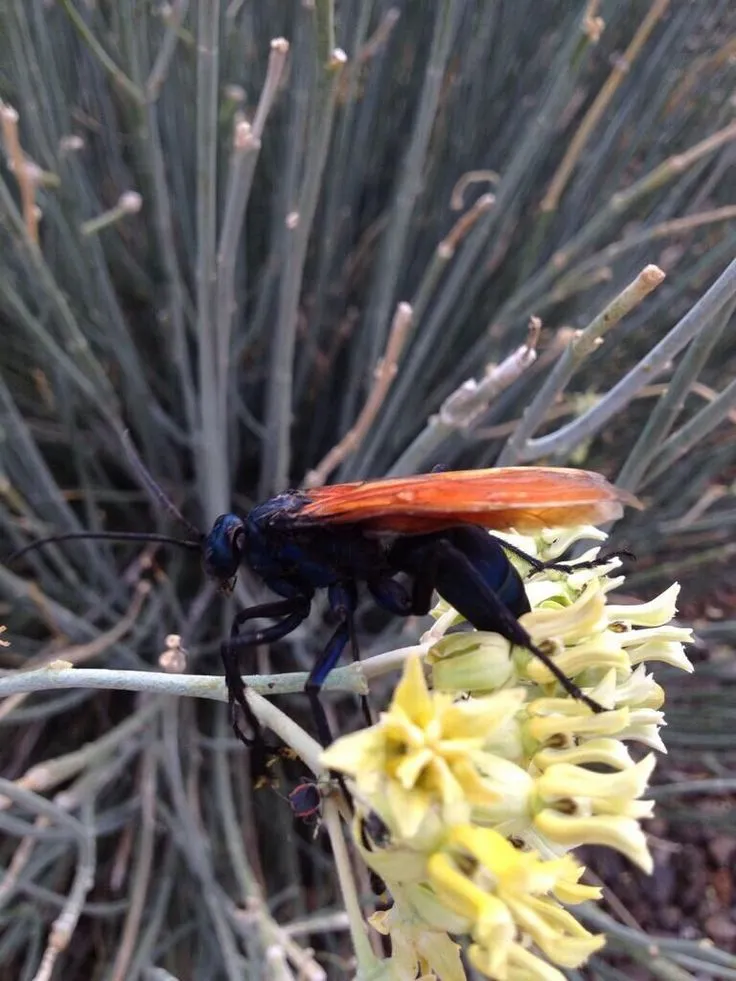What is a Tarantula Hawk Sting
The tarantula hawk, a formidable insect belonging to the Pompilidae family, is renowned not only for its size and striking appearance but also for its incredibly potent sting. Found primarily in the southwestern United States and parts of South America, these wasps are easily identified by their vibrant coloration, often featuring a metallic blue-black body and orange wings. They are solitary creatures, with the females being significantly larger than the males, reaching up to two inches in length. The primary purpose of the tarantula hawk is to hunt tarantulas, which serve as a host for their larvae. The female wasp paralyzes the spider with her sting, drags it to a burrow, and lays a single egg on its abdomen. When the egg hatches, the larva consumes the paralyzed spider, ultimately killing it. The tarantula hawk sting is considered one of the most painful insect stings in the world, often described as excruciating and immediately incapacitating. This potent venom causes intense pain, but fortunately, it is not usually life-threatening to humans.
The Science Behind the Pain
The excruciating pain associated with a tarantula hawk sting is not merely a result of the mechanical trauma of the stinger penetrating the skin. The venom itself is a complex cocktail of compounds that triggers an intense pain response. The precise composition of the venom is still being studied, but it is known to contain a variety of neurotoxins. These toxins act on the nervous system, specifically targeting pain receptors. The venom also contains substances that cause inflammation and swelling at the sting site, further contributing to the overall sensation of pain. Unlike some insect stings that primarily cause localized pain, the tarantula hawk venom appears to have a more systemic effect, spreading through the body and potentially causing muscle spasms and other neurological symptoms. The venom’s unique composition explains why the sting is often described as having a different type of pain than other insect stings, often described as a burning, throbbing sensation that can last for several minutes, or even hours.
How Painful is a Tarantula Hawk Sting

The pain from a tarantula hawk sting is widely regarded as among the most severe of any insect sting. Dr. Justin Schmidt, an entomologist who created the Schmidt Sting Pain Index, rates the tarantula hawk sting as a level 4, the highest possible rating on his scale. The Schmidt Sting Pain Index categorizes insect stings based on the level of pain they induce. On this scale, the tarantula hawk sting is described as a excruciating, almost unbearable, often leaving the victim temporarily incapacitated. Those who have experienced the sting often describe the pain as a searing, burning sensation accompanied by an intense throbbing. The pain is so intense that it is often compared to being electrocuted. The pain typically peaks within a few minutes and can last for several hours. While the initial pain subsides, a dull ache and tenderness may persist at the sting site for several days. It is important to note that individual pain tolerance varies, but the tarantula hawk sting is consistently described as exceptionally painful, regardless of individual differences.
Immediate First Aid Steps
If you are unfortunate enough to be stung by a tarantula hawk, immediate first aid is crucial to manage the pain and prevent complications. The first step is to remain calm, although this can be difficult given the intensity of the pain. Remove the stinger immediately, if it is still present. Unlike honeybees, tarantula hawks do not leave their stingers behind, so this step is less critical than with a bee sting. Wash the sting site thoroughly with soap and water to prevent infection. Apply a cold compress or ice pack to the affected area for 10-20 minutes at a time. This can help reduce pain and swelling. Elevate the affected limb to help minimize swelling. Over-the-counter pain relievers, such as ibuprofen or acetaminophen, can help manage the pain. Monitor for any signs of an allergic reaction, such as difficulty breathing, swelling of the face or throat, or hives. If any of these symptoms occur, seek immediate medical attention.
Treating the Sting at Home
After the immediate first aid steps, there are several things you can do at home to manage the symptoms and promote healing. Continue to apply cold compresses to the sting site to reduce pain and swelling. You can alternate the cold compress with warm compresses, as some people find this helps to soothe the area. Keep the sting site clean and dry to prevent infection. If the sting site becomes infected, seek medical attention. Over-the-counter antihistamines may help to reduce itching and swelling. A topical corticosteroid cream can also help to reduce inflammation. Avoid scratching the sting site, as this can worsen the irritation and increase the risk of infection. If the pain is severe, you can try soaking the affected area in Epsom salts. Rest and relaxation can also help your body recover from the sting. The pain and swelling will subside within a few hours, or maybe a day or two. If symptoms persist, contact a doctor.
When to Seek Medical Attention

In most cases, a tarantula hawk sting is not life-threatening, and home treatment is sufficient. However, there are several situations where you should seek medical attention. If you experience any signs of a severe allergic reaction, such as difficulty breathing, swelling of the face or throat, or hives, call emergency services immediately. If the pain is unbearable or does not subside after several hours, see a doctor. If the sting site becomes infected, characterized by increasing redness, swelling, pus, or fever, seek medical attention promptly. If you experience any neurological symptoms, such as muscle spasms, weakness, or dizziness, consult a healthcare professional. If you are unsure whether your symptoms are serious, err on the side of caution and seek medical advice. Prompt medical attention can help prevent complications and ensure a smooth recovery. It is always better to be safe than sorry when dealing with a potentially painful and venomous insect sting.
Long-Term Effects and Recovery
While the immediate effects of a tarantula hawk sting are often severe, long-term complications are rare. The primary concern is the intense pain and the possibility of a secondary infection at the sting site. With proper care and treatment, most people recover fully within a few days. The pain typically subsides within a few hours, although some individuals may experience lingering soreness or tenderness for a few days. The swelling and redness around the sting site will gradually decrease over time. In rare cases, the sting site may become infected, which can lead to more significant swelling, redness, and pus. If an infection develops, antibiotics may be necessary. There is no evidence that tarantula hawk stings cause any permanent damage or long-term health problems. However, some individuals may experience a psychological effect, such as anxiety or fear related to insects. Education about the insect and the sting can help to alleviate these feelings. The best advice is to stay calm, and follow the instructions and everything will be fine.
Preventing Tarantula Hawk Stings
The best way to deal with a tarantula hawk sting is to avoid getting stung in the first place. Prevention is the key. Be aware of your surroundings. Tarantula hawks are most active during the day, especially in sunny areas. Wear protective clothing. When working or hiking in areas where tarantula hawks are known to be present, wear long sleeves, long pants, and closed-toe shoes. Avoid disturbing tarantula hawks. Do not attempt to handle or provoke these insects. They are not aggressive unless threatened. Be cautious around tarantula hawk nests. These wasps often nest in burrows in the ground. Avoid disturbing these areas. Learn to identify tarantula hawks. Knowing what they look like can help you avoid them. If you encounter a tarantula hawk, remain calm and move slowly away from the area. By taking these precautions, you can significantly reduce your risk of being stung by a tarantula hawk and ensure your time outdoors is safe and enjoyable.
